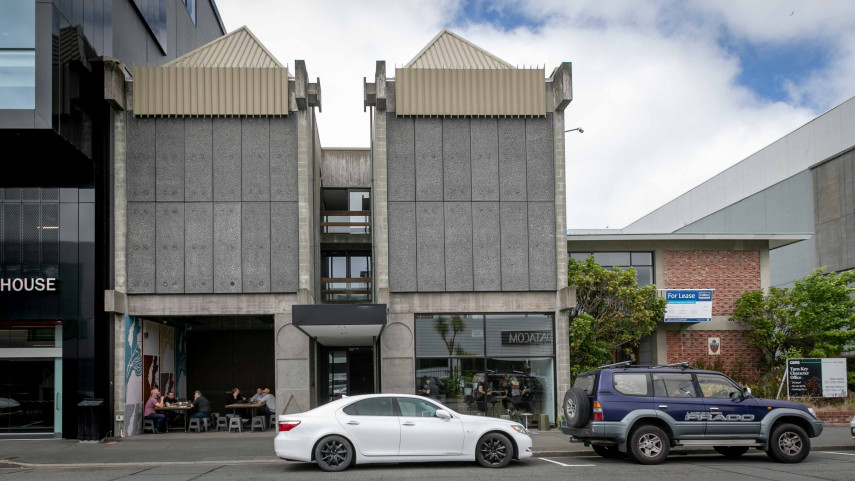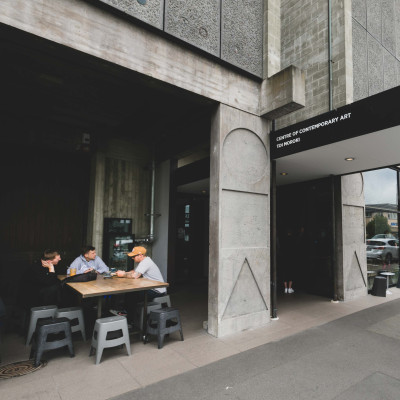
Museum to Pop Up in CoCA Building

Share this story
Canterbury Museum has found an ideal central city site for its pop-up museum and helped secure the future of a beloved Christchurch cultural institution in the process.
The Museum will lease the CoCA Centre of Contemporary Art Toi Moroki building at 66 Gloucester Street from early February.
From mid 2023, the building will house a mini museum on the first floor of the CoCA building, giving visitors a concentrated Museum experience while the Rolleston Avenue buildings are closed for redevelopment over the next 5 years.
Around half the pop-up Museum will be dedicated to temporary exhibitions, with the other half given over to “greatest hits highlights” from the Museum’s permanent galleries.
“At the end of last year we were encouraging people to come and farewell their favourites but the good news is that a few of those favourites will be shifting only just down the road,” Director Anthony Wright says.
“The pop-up museum will keep the Museum’s flag flying in the central city alongside Quake City and Ravenscar House Museum.
“We’re conscious that our 5-year closure is particularly impactful on young families, so there will be lots for kids to learn about and do in the pop-up Museum. We’re also particularly keen to provide visitors to Canterbury somewhere to learn about this region’s history.
“The Museum closed temporarily on 3 January to get ready for the exhibition SHIFT: Urban Art Takeover. Once that’s up and running, the team will be focusing on the displays for the pop-up at CoCA.”

Lux Espresso will remain in the CoCA building where Canterbury Museum plans to open a pop-up.
Christchurch Mayor Phil Mauger says this is great news for the city.
“I’m really pleased that the Museum will continue to have a presence in the city for both locals and visitors. This is a win-win for both the Museum and CoCA, which will ensure that visitors can still get their cultural fix within the central city!”
In May this year, the Canterbury Society of Arts Charitable Trust, which operates CoCA, paused operations to work on a financially sustainable plan for CoCA’s future.
“After a number challenges, including Covid, we were facing significant financial difficulties and needed more than $150,000 to replace the building’s air-conditioning system. Partnering with Canterbury Museum is exceptionally positive,” says Trust Board Chair Anna Ryan.
“This marriage of art and artefacts presents many opportunities, including enabling the necessary repairs to be made. I’m excited to see us open alongside each other with compelling displays for Cantabrians and visitors alike for the next 5 years.”
“This gives CoCA time to work towards a financially sustainable future.”
The Museum’s move to CoCA would not be possible without the support of Christchurch City Council, which intends to provide a grant of $75,000 towards an upgrade of the building’s heating and ventilation system.
The Museum will contribute the remaining funds needed for this $150,000 improvement which will make the building suitable for the display of artefacts and more comfortable for visitors. The work will be undertaken early next year.
“The building is perfect for our needs, and I’m extremely pleased we can help secure CoCA’s long-term sustainability by supporting the much-needed building upgrade. It’s a great result for both organisations,” says Anthony Wright.
“We’ll have a fantastic cafe for our visitors, Lux Espresso, which will remain in situ, along with current second floor tenants Johnstone Callaghan Architects. CoCA will continue to operate from the building using the Ō Papa ground floor gallery behind Lux."
The Canterbury Society of Arts was founded in 1880 and was the first organisation to exhibit art in Christchurch. Museum Founding Director, Sir Julius von Haast, was also a founding member of the Society.
